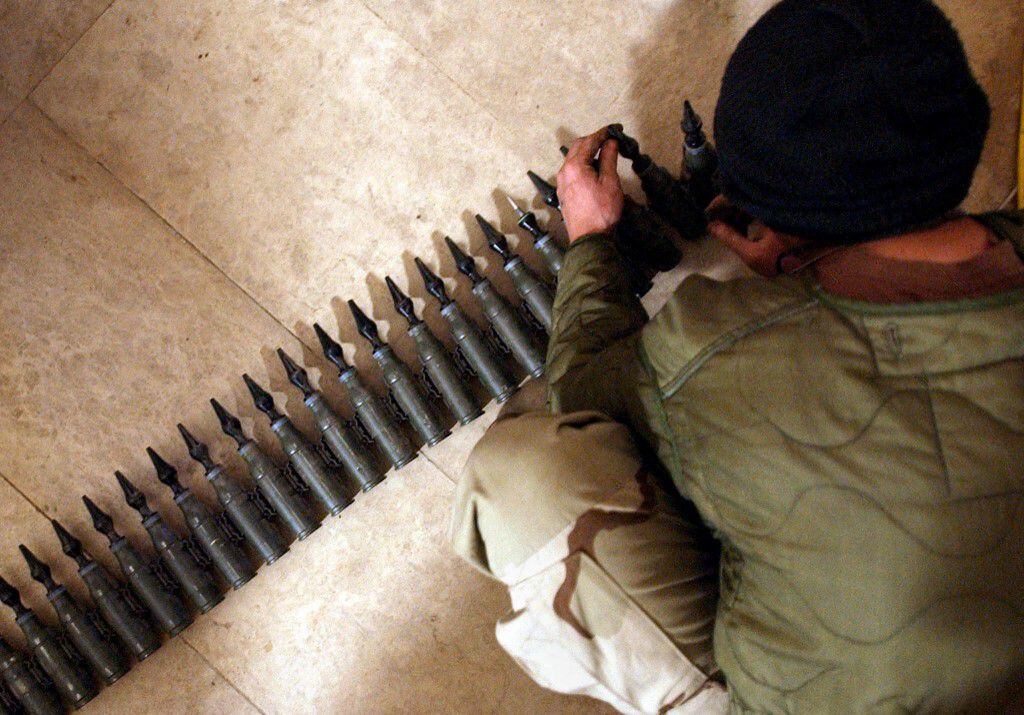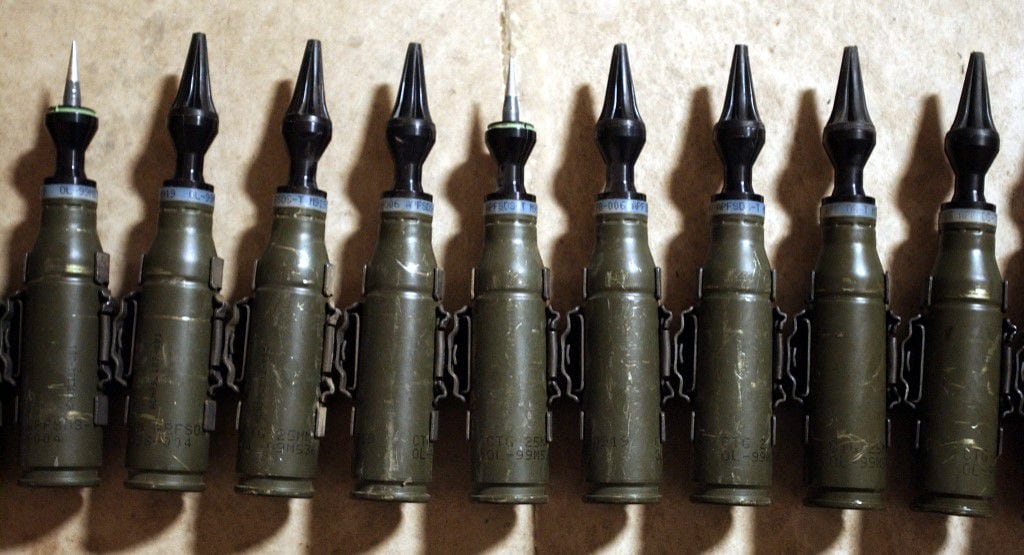On the night of Monday the 20th, the Vice Minister of Defense of the United KingdomAnnabel Goldie, announced that the new military aid package that her government will send to Ukraine in the context of the war with Russia it will include depleted uranium shells.
LOOK: Putin threatens to “hit back” if UK delivers depleted uranium shells to Ukraine
As detailed by Deputy Minister Goldie, and confirmed the following day by the British government, said shipment will be made up mainly of 28 Challenger 2 tanks capable of firing said ammunition.
“These munitions are highly effective in confrontations against modern tanks and armored vehicles.”, explained the vice minister.
The announcement provoked an immediate response from Russian President Vladimir Putin who noted that “if this happens, Russia will be forced to react, given that the West will have started using weapons with nuclear components”.
But should depleted uranium be considered a nuclear weapon?
radioactive element
Let’s start with the basics, what is depleted uranium?
According to the International Atomic Energy Agency (IAEA), “it is a byproduct of the production of fuel for certain types of nuclear reactors and nuclear weapons”.
To be clearer. Uranium is an element found in nature. Being enriched, it can be used for positive purposes, such as nuclear reactors, or for destructive purposes, such as bomb making. An example of the latter is the dispute that the West maintains with countries like Iran or North Korea to prevent them from being able to enrich uranium to a level that allows them to use it to make nuclear weapons.
When saying that the uranium is enriched, what actually happens is that the amount of the U-235 isotope is increased, it is explained in an IAEA publication.
“The mixture that remains after the enriched uranium is removed is called depleted uranium because it contains small amounts of the isotopes U-235 and U-234. Depleted uranium is 60% less radioactive than naturally occurring uranium. Chemically, it behaves like natural uranium.”, adds the study.
After the British announcement, the nuclear organization Campaign for Nuclear Disarmament condemned the delivery of ammunition with depleted uranium and warned in a statement that it would be a “additional environmental and health disaster for those living in the heart of the conflict”.
According to the European Commission, “radiation hazards from uranium only arise from breathing it in dust, eating or drinking contaminated food or water, or inserting shrapnel into the body”.
The organs that are mainly affected in people who have consumed or inhaled large amounts of uranium are the kidneys and the lungs.
“There is no conclusive evidence that depleted uranium projectiles significantly affect the environment or people. This has been used for decades. The Royal Society of Chemistry ensures that the social and environmental impact is minimal”, points to Trade international analyst Roberto Heimovits.
combat use
Indeed, as the expert mentions, depleted uranium was used for the first time in combat in the 1991 Gulf War. It was later used in the conflicts in Serbia and Kosovo.
According to the European Commission, “Medical examination of Gulf War veterans who suffered uranium shrapnel injuries has so far revealed no serious health effects.”.

The adaptation given to depleted uranium is both in the form of ammunition and armor plates. “It is used to increase the penetration of anti-tank shells. Uranium is a very dense element, which increases the penetration of the shells and makes it easier to destroy the enemy tankHeimovits details.
Speaking to the BBC, a former British Army tank commander and chemical weapons expert, Colonel Hamish of Breton-Gordon, assures that those bullets used by the Challenger 2 contain only “strokesdepleted uranium.
Therefore, the military considered “laughable” suggest that they are somehow linked to nuclear weapons, referring to Putin’s remarks.
Russian concern
But why is this shipment causing so much nervousness in Russia? According to Heimovits, this is because it could further expose the shortcomings of Moscow’s military equipment on the battlefield.
“The Russians have suffered very heavy losses with the conventional shells used by the Ukrainian Soviet tanks. With more advanced projectiles such as depleted uranium the losses will be even greater.“, Explain.
“According to various publications, Russian tanks have a serious manufacturing problem that makes them much more vulnerable to enemy tank fire. Specifically, carry shells in the turret”, adds the expert.

The issue, however, has reawakened the growing concern surrounding this war. Could it trigger a nuclear conflict that puts the entire planet at risk?
For Heimovits, such a decision would have no basis. “It’s not clear, I don’t think they would take such a poor pretext to try to introduce tactical nuclear weapons on the battlefield, such an action would not be credible”, he points out.
Source: Elcomercio
I am Jack Morton and I work in 24 News Recorder. I mostly cover world news and I have also authored 24 news recorder. I find this work highly interesting and it allows me to keep up with current events happening around the world.

:quality(75)/cloudfront-us-east-1.images.arcpublishing.com/elcomercio/7OJ73F7JG5H5HGIELABWNME5QU.jpg)


:quality(75)/cloudfront-us-east-1.images.arcpublishing.com/elcomercio/I2453I3SEVHKTG7TCB6QDBOX2I.jpg)


